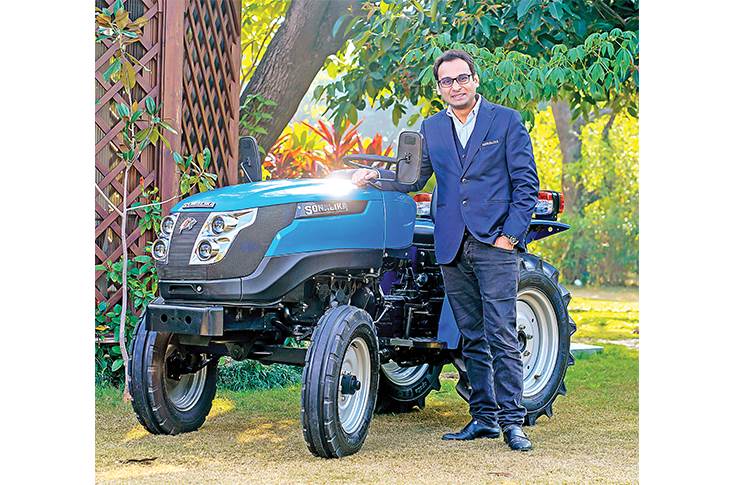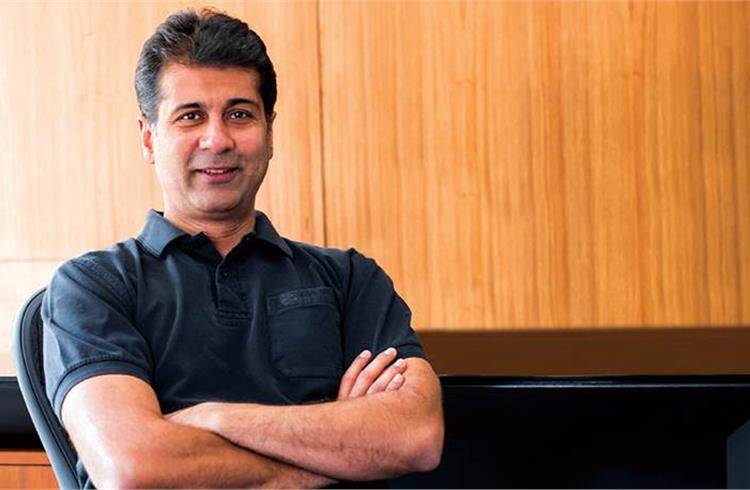After record-breaking sales in the previous financial year, tractor sales are on a slow lane in India – the world’s biggest market for tractors.
Domestic tractor sales peaked at around 945,000 units in 2022-2023 (April-March) as factors such as a good monsoon season and farm incomes lightened farmers’ sentiments across the country.
However, the market has dampened this year. This is primarily because of the high base in the previous year. Erratic monsoons and overall inflation in the economy have also dampened the sentiments of farmers across the country.
The growth in the domestic tractor industry is likely to be flattish on a year-on-year basis, according to India’s third-largest tractor maker Sonalika.
Excerpts from an interaction with Raman Mittal, Joint Managing Director, Sonalika Group.
Can you throw some light on how the year 2023 has been for the tractor from an industry perspective?
India is now the biggest tractor industry globally. Last year it clocked almost 10 lakh tractors, which is a huge figure. However, this year has been relatively moderate, with the industry currently at a 2.7 percent decline. Sonalika, on the other hand, has performed exceptionally well with a growth of 3.5 percent in the domestic market.
The September to November season has been good for the industry. Overall domestic volume grew by 7 percent in November, while we grew by almost 30 percent. From the industry perspective, the numbers are already at a very high level. So, it is looking at minuscule growth or degrowth this year.
What are the macroeconomic factors that resulted in this flattish kind of growth this year?
The macroeconomic landscape hasn’t been ideal this year. Rainfall has deviated by 6 percent from the long-term average, and reservoir levels are 9 percent lower than the 10-year average and 22 percent lower than last year. While not great news, it’s not the worst either. There’s still a cushion, but external factors like these have impacted the industry.
Given the sluggish demand and higher input cost in the recent past, how is the pricing scenario? Have price hikes impacted the farmer sentiments?
I believe the worst is behind us. The commodity costs went through the roof during the pandemic and the year after, it is very unfortunate to see prices increase for everything, including tractors.
While increasing the prices, we have made a very conscious effort to improve the performance and features of the products and balance it on both sides. The blow on farmers has been softened by upgrading products such as increasing the power by 2 hp or standardising certain features. It is more balanced as an equation today.
However, things have now stabilised, so we don’t anticipate any sudden spike in input costs going forward.
What trends have you noticed when it comes to horsepower?
Yes, the 40-50 hp segment is growing at a higher rate while the 30-40 hp segment is under stress. The trend towards higher horsepower tractors, particularly in the 40-50 hp segment, is driven by the practical utility and increased yield they offer. These tractors prove to be more efficient in handling agricultural equipment, resulting in significantly higher output. The value proposition lies in the enhanced capabilities of these higher horsepower tractors, making them a preferred choice for both companies and customers.
In fact, higher horsepower tractors bring several advantages to the farming process. First, they can handle more substantial and complex agricultural machinery, improving overall efficiency. This is crucial in modern farming, where advanced equipment is often employed to enhance productivity. Additionally, higher horsepower allows for faster and more effective field operations, contributing to increased yield. The enhanced power also enables these tractors to tackle challenging terrains or tasks that may be beyond the capacity of lower horsepower models.
With macroeconomic conditions being the same for anyone at the end of the day, what kind of factors fuel such an outperformance in the current market environment?
Our outperformance is attributed to factors such as new product launches, understanding customer requirements, and clear long-term production and investment planning. Building trust with our dealers and customers has been crucial. Despite the industry’s growth, our dealer network remains comparable to times when our volumes were significantly lower. Transparency in pricing strategy and product improvements on the customer side has also played a pivotal role in our growth.
The number of dealers we have now is more or less similar to when our volumes were at around 60,000 tractors. We are building with the channel partners, making them grow with us. On the customer side, product improvements, pricing strategy and transparency help us grow.
Trust is the biggest deficit when doing a transaction. The automotive segment has moved ahead significantly in terms of price, transparency, and funding availability. But for tractors, these factors are under the carpets.
You have been the flag bearer of Made-in-India tractors worldwide. Can you please help us understand what the perception of Made-in-India tractors in global markets is?
In agricultural equipment, there is nothing called ‘Made in China’. I mean, Chinese cars or equipment would have that advantage globally.
Indian products, especially tractors, are perceived seriously on the global stage. Global companies like John Deere, Same Deutz, and CNH are manufacturing tractors in India. The improved Indian vendor base and quality systems contribute to this positive perception. India’s strong association with agriculture aligns well with the image of an agricultural economy.
Can you talk about how the export markets are doing?
The export market has seen a significant dip, with a 32.5 percent decline until November. Sonalika has witnessed a degrowth of 4.3 percent. Concerns of recession and geopolitical issues in Europe and the US, as well as instability in neighbouring markets like Sri Lanka and Nepal, have also impacted exports. Despite these challenges, our presence in over 100 countries provides a substantial market for us.
What is industry growth going to look like in 2024? Can you give us some estimates on how the domestic industry and company could perform next year?
Much depends on the next monsoon. If it’s favourable, the industry might see single-digit growth next year, ranging between negative 5 percent and 5 percent. ITL aims to continue surpassing industry growth, and we remain ambitious with our plans for the coming year.
This interview was first published in Autocar Professional’s December 15, 2023 issue.



